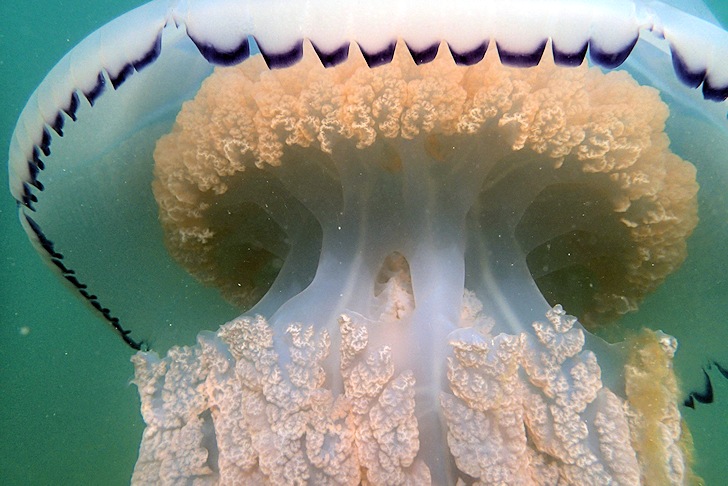A 20-kilogram barrel jellyfish has had a close encounter with an environmentalist and his surf dog in the Percuil Estuary in Cornwall, Wales.
Matt Slater, marine conservationist at the Cornwall Wildlife Trust, was swimming in the Percuil Estuary with his dog when he spotted a large "Rhizostoma pulmo" just a couple of meters underwater.
"These creatures are incredibly beautiful when you get a close look at them," Slater tells the Cornish Guardian.
"The tentacles really look like soft coral, and round the edge of the jellyfish's umbrella-like bell, there is a deep blue line punctuated every twenty centimeters or so with a tiny dot, a sensory statocyst."
"Jellies are more aware of the watery world around them than you may imagine. They are constantly swimming up and down in the water column, looking for profitable patches of plankton."
"The statocysts are the sensory cells that enable them to orientate and tell up from down."
The barrel jellyfish are totally harmless and feed on plankton. They do have stinging cells, but they are not able to get through human skin.
